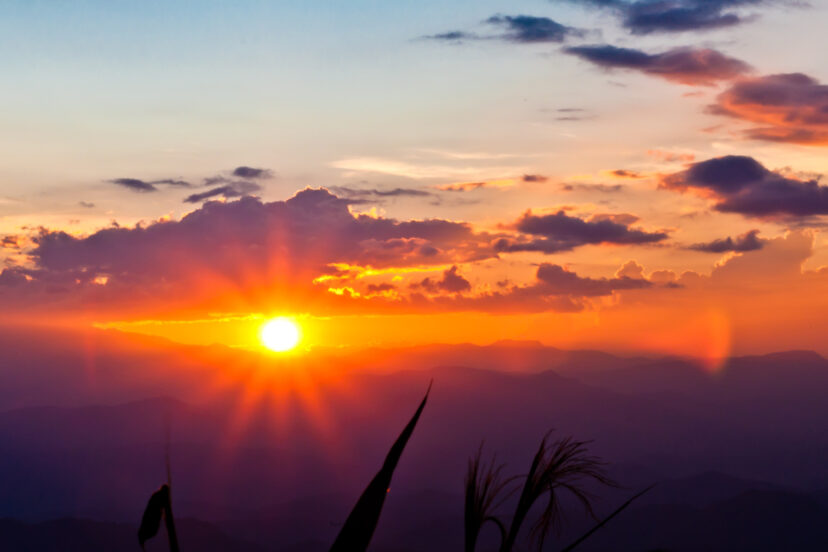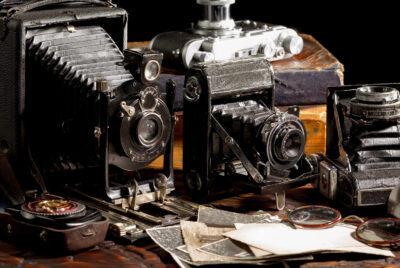Sunset Photography
There’s something almost spiritual about photographing a sunset. I’ve chased sunsets through forests, over oceans, and across rooftops, and each time feels like a first kiss—familiar, yet breathtaking. If you’ve ever looked at the sky and thought, “I wish I could capture that,” this guide is for you.
Why Sunset Photography Captures Hearts
The Emotional Magic of Golden Hour
Golden hour—that short window before the sun dips below the horizon—is pure magic. The light is soft, warm, and flattering. It turns everyday scenes into visual poetry.
Why I Keep Chasing the Sunset
Sunset photography is more than just timing. It’s a way to pause, reflect, and appreciate fleeting beauty. No two sunsets are ever the same, and that unpredictability makes the challenge worth it every time.
>> Full range & prices of camera kits HERE <<
Essential Gear for Sunset Shoots
You don’t need a ridiculously-expensive setup, but a few key tools make a difference.
Camera Recommendations
A DSLR or mirrorless camera gives you full control over settings and higher dynamic range.
Mirrorless vs DSLR for Sunset Shots
Mirrorless cameras are lightweight and often better in low light. DSLRs still hold their ground for durability and battery life. I’ve used both—either can shine with the right technique.
The Best Lenses for Capturing Drama
Your lens affects everything from framing to light intake.
Wide-Angle vs Telephoto: What to Choose
Wide-angle lenses (16–35mm) capture sprawling landscapes and dramatic skies. Telephoto lenses (70–200mm) let you zoom in on the sun or compress scenery for a surreal effect. I carry both if I can.
Understanding the Light at Sunset
Knowing the science of the sky helps you anticipate and plan.
The Color Phases of Sunset
Sunsets aren’t just orange. They can go from yellow to orange to pink to purple in minutes. Being ready for those transitions gives you more dynamic images.
How to Predict a Great Sunset
Cloud cover plays a huge role. High, wispy clouds? Great. Thick, low clouds? Not so much. Apps like Clear Outside or SunsetWx help forecast sky conditions.
Ideal Camera Settings for Sunset Photography
ISO, Aperture, and Shutter Speed Tips
Keep your ISO low (100–400) to reduce noise. Aperture around f/8 to f/11 keeps more in focus. Adjust shutter speed depending on light—start around 1/125 and tweak from there.
Shooting in RAW: A Must-Do
RAW files hold more detail and let you recover highlights and shadows better than JPEG. Always shoot in RAW when chasing sunsets.
Composition Tips That Work Wonders
Use the Rule of Thirds, Then Break It
Placing the horizon along the top or bottom third of your frame creates balance. But don’t be afraid to break the rules if the shot calls for it. That’s where creativity kicks in.
Leading Lines and Silhouettes
Paths, shorelines, or fences can guide the viewer’s eye to the sunset. Silhouettes of trees, people, or buildings add depth and mood to the scene.
Timing is Everything
Arrive Early, Stay Late
The best colors can appear before the sun hits the horizon and linger after it’s gone. Show up 30–45 minutes early and hang around after sunset for those post-sunset glows.
Using Apps to Plan Your Shots
Apps like PhotoPills and Sun Surveyor tell you exactly where the sun will set based on your location and date. Total game changers.
>> Full range & prices of camera kits HERE <<
Editing Sunset Photos Like a Pro
Post-Processing to Boost Colors
Use Lightroom to bump up contrast, vibrance, and saturation—just don’t overdo it. Adjust white balance for that warm, inviting glow.
Avoiding Overediting: Keep It Natural
We’ve all seen sunsets that look like radioactive rainbows. Aim for enhancements that preserve the scene’s natural beauty. Less is more.
Best Locations for Sunset Photography
Cityscapes vs Nature Landscapes
In cities, sunsets reflecting off buildings or behind skylines can be stunning. In nature, you get uninterrupted horizons and dramatic cloudscapes.
Local Hidden Gems to Explore
Don’t overlook nearby parks, rooftops, or lakes. Sometimes the best shots are just around the corner. I’ve found gold 10 minutes from home.
Common Sunset Photography Mistakes
Overexposure and Underexposure
Let the highlights breathe. Slight underexposure helps preserve color and detail in bright skies. Use your histogram—it doesn’t lie.
Forgetting Foreground Interest
Sunsets alone are pretty, but foreground elements like people, plants, or structures give context and emotion. Think of your photo as a story, not just a color splash.
Telling a Story Through Your Sunset Shots
Adding Human Elements for Emotion
A silhouette of someone watching the sunset adds a narrative. It invites the viewer to imagine themselves in the moment.
Capture the Transition, Not Just the Sun
Don’t just focus on the glowing orb. Look behind you. Sometimes the opposite direction holds pastel skies or glowing mountain ridges that tell a fuller story.
Conclusion
Sunset photography isn’t about capturing a perfect moment—it’s about chasing beauty, embracing imperfections, and telling stories with light. Whether you’re shooting from a mountain peak or your own backyard, every sunset is a chance to create something unique. So grab your camera, scout your spot, and keep chasing that golden glow—you never know what masterpiece the sky has in store.
>> Full range & prices of camera kits HERE <<
FAQs
1. What’s the best time to shoot sunset photos?
Start shooting 30 minutes before sunset and continue 15–20 minutes after. You’ll catch a full range of colors and lighting moods.
2. Can I shoot sunset photos with my smartphone?
Absolutely! Use manual or pro mode if available. Keep your lens clean and stabilize your phone for sharper shots.
3. Why do my sunset photos look dull?
It could be incorrect exposure or white balance. Try underexposing slightly and warming up your tones during editing.
4. Should I use a tripod for sunset photography?
Yes, especially in low light. A tripod prevents camera shake and allows longer exposures for richer colors.
5. Are filters useful for sunset photography?
Definitely. Graduated ND filters help balance the bright sky and darker foreground, giving a more even exposure.
Further reading
Check out our other relevant articles:
Golden Hour Photography: Mastering Nature’s Most Magical Light
To further enhance your understanding of sunset photography, here are two comprehensive resources offering educational guidance and practical tips:
1. 15 Sunset Photography Tips for Beautiful Results – Digital Photography School
This article provides a wealth of practical advice for capturing stunning sunset images. It covers essential topics such as planning your shoot, choosing the right equipment, experimenting with different focal lengths, and mastering composition techniques like the rule of thirds. Whether you’re a beginner or looking to refine your skills, these tips can help elevate your sunset photography.
2. My Favorite Sunset Photography Tips and Tricks – Photography Life
This guide delves into more advanced techniques for sunset photography, including managing exposure to preserve highlight details, creating sunstar effects with narrow apertures, and using apps for pre-visualization. It also discusses the importance of returning to the same location to capture different sunset conditions. These insights are valuable for photographers aiming to deepen their creative approach to sunset scenes.
These resources complement the article’s content by providing detailed tutorials and expert advice, enhancing your skills and understanding of sunset photography.




